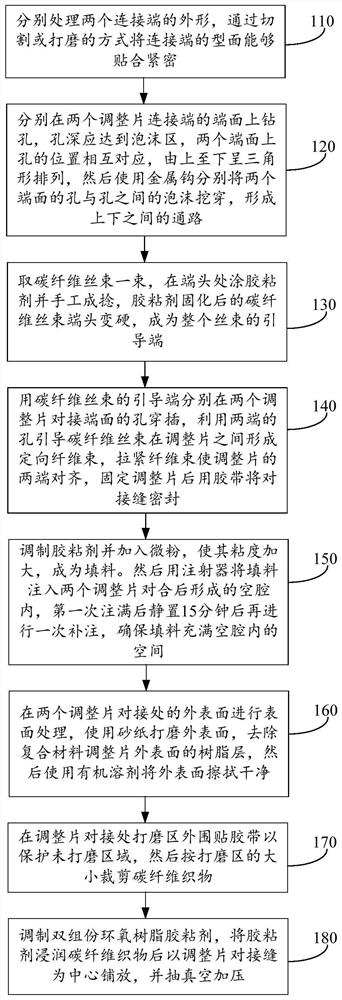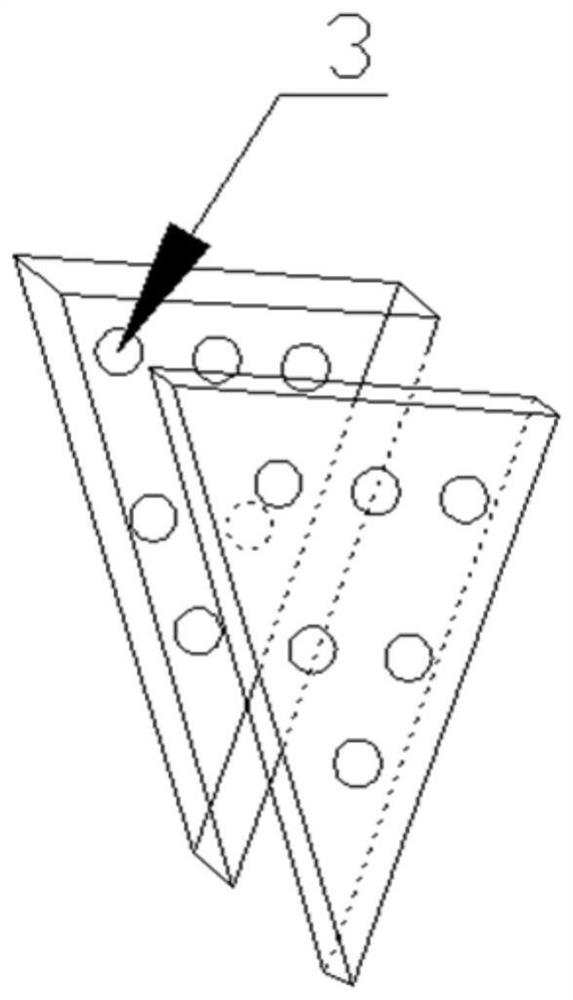Oriented fiber reinforced cementing connection method
A fiber-reinforced and connecting method technology, which is applied in the field of composite parts connection, can solve the problems of long repair cycle, change of part structure and shape, and large workload, so as to reduce the difficulty of operation, reduce the weight of parts, and improve the overall rigidity.
- Summary
- Abstract
- Description
- Claims
- Application Information
AI Technical Summary
Problems solved by technology
Method used
Image
Examples
Embodiment Construction
[0042] The present application will be further described in detail below through specific implementation modes in conjunction with the accompanying drawings.
[0043] See figure 1 , which is a flowchart of a directional fiber-reinforced adhesive connection method provided by the present invention, comprising the following steps:
[0044] Step 110 , processing the shapes of the two connecting ends separately, and making the profiles of the connecting ends closely fit by cutting or grinding.
[0045] The profiles of the connecting ends can be fitted tightly by cutting or grinding to ensure that the gap between the joints is not greater than 2mm.
[0046] Step 120. Drill holes on the end faces of the connecting ends of the two adjustment pieces respectively. The depth of the holes should reach the foam area. The positions of the holes on the two end faces correspond to each other and are arranged in a triangle from top to bottom. The foam between the holes is dug through to for...
PUM
 Login to View More
Login to View More Abstract
Description
Claims
Application Information
 Login to View More
Login to View More - R&D
- Intellectual Property
- Life Sciences
- Materials
- Tech Scout
- Unparalleled Data Quality
- Higher Quality Content
- 60% Fewer Hallucinations
Browse by: Latest US Patents, China's latest patents, Technical Efficacy Thesaurus, Application Domain, Technology Topic, Popular Technical Reports.
© 2025 PatSnap. All rights reserved.Legal|Privacy policy|Modern Slavery Act Transparency Statement|Sitemap|About US| Contact US: help@patsnap.com



